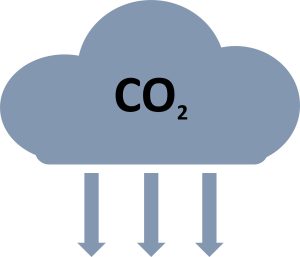ARTICLE 7: Scenario Testing and Risk Assessment
Throughout this series we have delved into the complexities of CO2 storage, from understanding its unique properties and flow behaviour to the challenges of capillary-dominated regimes and seal integrity. We explored advanced modelling techniques, the significance of phase transitions, and the critical role of monitoring technologies in ensuring storage integrity. These foundational concepts provided insights into CO2 migration dynamics and highlighted the importance of considering geological and geomechanical factors in storage projects. Building on this knowledge, we now address scenario testing and risk assessment in CO2 storage modelling.
Bridging the Gap: Spatial and Temporal Scales
CO2 projects require consideration of significant spatial and temporal scales. This is very different to oil and gas development projects which typically operate on timescales of 10 to 30 years and focus on resource utilisation economics during the operational lifetime. CO2 project modelling needs to consider short term near wellbore injection through to long term, geological timescale interaction of the CO2 with host rocks, be that regional migration or host rock reaction potential (Figure 1). This comprehensive approach ensures a thorough understanding of CO2 behaviour and facilitates informed decision-making in Carbon Capture, Utilisation, and Storage (CCUS) projects.

Importance of Monitoring Phases
Modelling large spatial and temporal scales extends beyond the injection phase into the long-term monitoring phase of CCUS projects. Monitoring technologies play a crucial role in verifying storage conformance and containment, ensuring that CO2 behaves as predicted and remains within approved storage complexes. Continued advancements in monitoring techniques are essential for enhancing data quality and providing insights into CO2 migration dynamics over extended timescales.
Bridging the gap between spatial and temporal scales in CO2 storage modelling presents a significant challenge. By considering multi-dimensional dynamics and geological timescales, stakeholders can develop robust models that accurately predict CO2 behaviour and inform long-term decision-making. Continued research and innovation in modelling techniques and monitoring technologies will further enhance our understanding of CO2 storage dynamics, facilitating a smooth transition towards a low-carbon future.
Scenario Testing and Risk Assessment
In CCUS projects, the abundance and quality of data to control model calibration is a key consideration when generating these long-term forecast models. Conducting multiple scenario tests and integrating numerical models into risk assessments is paramount for ensuring project success. This process is essential not only during site selection but also throughout the monitoring phase to detect and mitigate risks as they arise.
The demands of CCUS projects, coupled with the need for accurate CO2 storage modelling, can strain the performance of traditional reservoir simulators. Modified invasion percolation simulators offer computationally efficient runtimes and the ability to integrate high-resolution heterogeneous models across multiple length scales, addressing many challenges faced by traditional simulators.
Incorporating Viscous Forces and Flow Regimes
While invasion percolation simulators excel at capturing capillary and buoyancy-dominated flow regimes over spatial and temporal scales, it’s crucial to acknowledge the role of viscous forces, particularly near the injection site. Darcy flow models are essential for understanding CO2 injection dynamics close to the wellbore, where viscous forces dominate. However, as CO2 migrates away from the injection site, invasion percolation becomes increasingly relevant, providing insights into flow dynamics over extended distances. An effective modelling strategy often involves employing both approaches in a complementary fashion.
Toward Integrated Fluid Flow Simulators
The ideal solution is a CO2 fluid flow simulator that seamlessly integrates both viscous-dominated and capillary/buoyancy-dominated flow regimes within a single model. This would eliminate the need for potentially inaccurate assumptions about flow regime transitions and enhance model accuracy across the entire CO2 storage domain. As each storage site presents unique challenges, the industry is rapidly learning and evolving in CO2 storage modelling, identifying deficiencies, and advancing technology to meet the demands of CCUS projects.
Conclusion
Modelling CO2 storage sites presents unique challenges compared to traditional reservoir simulations. A nuanced understanding of CO2 behaviour and flow physics in the subsurface is essential for accurate predictions. The urgency of addressing climate change underscores the importance of developing robust solutions and technologies for CCUS. Innovation in CO2 storage modelling is critical for advancing our efforts to mitigate climate change impacts. By embracing integrated approaches and continuous learning, stakeholders can navigate the complexities of CO2 storage projects and contribute to a sustainable future.
References
- Ringrose, P.S., Andrews, J., Zweigel, P., Furre, A-K., Hern, B., & Nazarian, B. (2022, October). Why CCS is not like reverse gas engineering. First Break, 40(10), 85-91. https://doi.org/10.3997/1365-2397.fb2022088
- Ringrose, P., & Bentley, M. (2021). Reservoir Model Design. Springer. https://doi.org/10.1007/978-3-030-70163-5
- Bebb, Florence Letitia, Evans, Kate Clare Serena, Mukherjee, Jagannath, Saeed, Bilal, and Geovani Christopher. “Understanding the Flow Dynamics of CO2 Plumes in the Subsurface.” Paper presented at the Abu Dhabi International Petroleum Exhibition & Conference, Abu Dhabi, UAE, November 2021. Doi: https://doi.org/10.2118/207539-MS.


